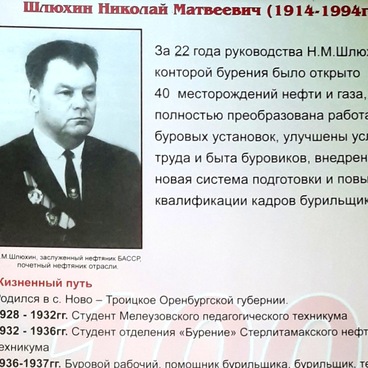One of the unique exhibits kept at the Ishimbay Museum of History and Local Lore is the book ‘Physical Geology’ by the famous Russian explorer, scientist, geographer, and geologist Ivan Mushketov. The book was published in 1891 by the St. Petersburg printing house of MikhaIl Stasyulevich, editor of the ‘Vestnik Evropy’ magazine (literally: European Chronicler) and an Active State Councillor. It was donated to the museum by petroleum geologists, who referred to this scientific work as their textbook.
Mushketov rose to fame as a prominent explorer of Central Asia, as well as a participant of geological surveys in the Urals and the Caucasus. The scientist conducted surveys in Eastern Siberia for the Circum-Baikal Railroad, which was part of the Trans-Siberian Railroad up until 1949. Mushketov founded and initially headed the Russian service of continuous seismic monitoring. Additionally, in 1882, he was named senior geologist at the Geological Committee under the Russian government. He wrote ‘Physical Geography’ as a summary of his extensive scientific research. At the time of its publication, this major work was groundbreaking not only for domestic but also for international science.
Today, physical geography refers to the system of sciences that study and describe the structure, dynamics, and functioning of the Earth’s outer layer and its structural elements. In his book, Musketov wrote about the problem that made it impossible to create a universal and all-encompassing geographical science: “Our comprehensive body of knowledge about the Earth should constitute a single fundamental science, which could be called geography in the broadest sense of the word; however, the Earth is so diverse in its properties that it cannot be studied as a whole by any single science.” At the same time, the scientist outlined several approaches that could be applied to merge a number of Earth sciences. One of such integrated sciences is physical geography.
Mushketov wrote: “The Earth can be studied as a physical body that is affected by physical forces, which was the rationale for creating a new branch of science, which is called physical geography and which studies all of the Earth”s physical properties.” He clarified that this science studies the shape, size, density, and other physical properties of the Earth’s outer layer, as well as the current nature of the relationship between its elements.
Mushketov rose to fame as a prominent explorer of Central Asia, as well as a participant of geological surveys in the Urals and the Caucasus. The scientist conducted surveys in Eastern Siberia for the Circum-Baikal Railroad, which was part of the Trans-Siberian Railroad up until 1949. Mushketov founded and initially headed the Russian service of continuous seismic monitoring. Additionally, in 1882, he was named senior geologist at the Geological Committee under the Russian government. He wrote ‘Physical Geography’ as a summary of his extensive scientific research. At the time of its publication, this major work was groundbreaking not only for domestic but also for international science.
Today, physical geography refers to the system of sciences that study and describe the structure, dynamics, and functioning of the Earth’s outer layer and its structural elements. In his book, Musketov wrote about the problem that made it impossible to create a universal and all-encompassing geographical science: “Our comprehensive body of knowledge about the Earth should constitute a single fundamental science, which could be called geography in the broadest sense of the word; however, the Earth is so diverse in its properties that it cannot be studied as a whole by any single science.” At the same time, the scientist outlined several approaches that could be applied to merge a number of Earth sciences. One of such integrated sciences is physical geography.
Mushketov wrote: “The Earth can be studied as a physical body that is affected by physical forces, which was the rationale for creating a new branch of science, which is called physical geography and which studies all of the Earth”s physical properties.” He clarified that this science studies the shape, size, density, and other physical properties of the Earth’s outer layer, as well as the current nature of the relationship between its elements.

